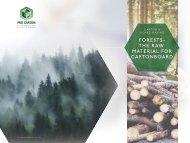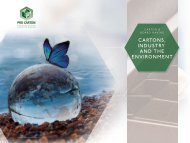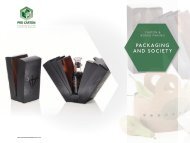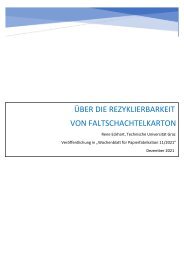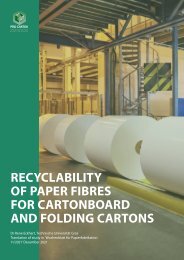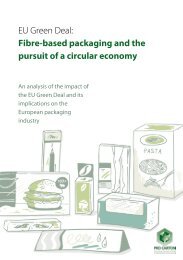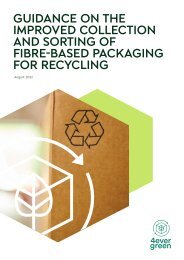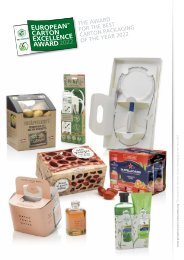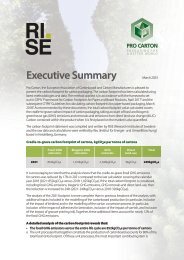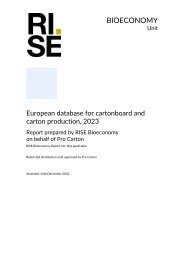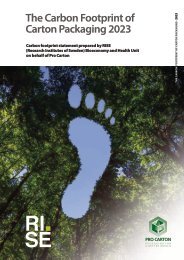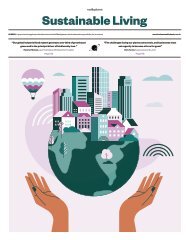Pro Carton Fact File – Module 4 – The Pulping Process
Create successful ePaper yourself
Turn your PDF publications into a flip-book with our unique Google optimized e-Paper software.
RECYCLED PULP<br />
CARTON &<br />
BOARD MAKING<br />
Recycled pulp is made from paper and board, including recovered cartonboard from recycling collection schemes.<br />
<strong>The</strong> cartonboard mills buy back the sorted material from recyclers, this is the final loop in the circular business model.<br />
Fibre separation is achieved by mechanical agitation in water. Pulp made in this way is known as recycled pulp,<br />
recycled fibre, recovered fibre, waste paper fibre or simply secondary fibre.<br />
THE PULPING<br />
PROCESS<br />
ENERGY SOURCES USED IN THE PRODUCTION OF PULP, PAPER AND CARTONBOARD<br />
Chemical pulping results in a by-product which is used as an energy source for pulping and, where appropriate,<br />
bleaching. In integrated mills, where paper or board is made at the same site, the wood by-products also provide energy<br />
in the form of electricity and steam, for the manufacturing process. This energy source is, therefore, renewable and<br />
sustainable. It accounts for around 50% of the energy consumed in pulp, paper and cartonboard manufacture.<br />
<strong>The</strong> mill operators are continuously increasing the share of renewable energy to reduce use of fossil energy sources.<br />
<strong>The</strong> mills in Scandinavia are the first to approach carbon neutrality, the ultimate target of the industry for all mills.<br />
RECYCLED PULP PRODUCTION<br />
Recovered<br />
recycling materials<br />
Hydrapulper fibre<br />
separation in water<br />
Cleaning<br />
Board<br />
machine<br />
Board<br />
THE CARTON PACKAGING FACT FILE<br />
All contents copyright © BPIF 2017.



